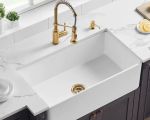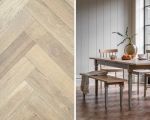- understanding-bathroom-flooring-requirements
- durability-and-moisture-resistance
- style-comfort-and-maintenance-needs
- budgeting-priorities-and-installation-tips
- real-case-how-the-right-flooring-transformed-a-small-bathroom
1. Understanding Bathroom Flooring Requirements
Choosing the right flooring for your bathroom involves more than just picking a color or texture you like. Bathrooms are high-moisture, high-traffic environments, and not every flooring option can stand up to these conditions. That’s why learning the foundational principles—such as water resistance, safety, and durability—is essential before you even look at styles or materials.
While materials like carpet are obviously unsuitable, even common choices like hardwood can be problematic if not properly sealed. Understanding your space—size, ventilation, family use—will guide your decisions. For expert guidance and curated material selections, consider browsing trusted providers like Improvement.
2. Durability and Moisture Resistance
2.1 Vinyl: Affordable and Water-Tight
Vinyl flooring, especially luxury vinyl planks (LVP), has grown in popularity due to its affordability and moisture resistance. It mimics the look of wood or stone, but offers easy installation and superior water protection. Homeowners with young kids or high-traffic bathrooms often prefer vinyl for its easy upkeep and durability.
2.2 Porcelain and Ceramic Tile: Timeless and Tough
Porcelain and ceramic tiles are classic choices that combine elegance with practicality. They’re virtually waterproof and available in countless textures and designs. However, cold surface temperatures and slippery finishes can be concerns. To counter this, opt for textured or matte tiles that provide grip.
2.3 Engineered Wood and Laminate: Beautiful but Cautious
Engineered wood and waterproof laminate flooring offer a warm, upscale look. While more resistant than traditional hardwood, they still need excellent sealing and proper care to prevent warping. If you're aiming for a luxurious finish but don’t want to compromise on water-resistance, these may suit specific bathroom areas like powder rooms or low-moisture zones.
3. Style, Comfort and Maintenance Needs
3.1 Matching Style with Practicality
When it comes to flooring, function should lead style—but that doesn’t mean you have to sacrifice aesthetics. If your bathroom follows a coastal, modern, or farmhouse theme, flooring should visually support it while being practical. Stone-look vinyl or hexagon tiles, for instance, can add character without creating upkeep nightmares.
3.2 Warmth and Comfort Underfoot
Tiles can be chilly underfoot, which is where radiant heating systems or cushioned vinyl can make a big difference. In colder climates, homeowners may prioritize underfloor heating compatibility when selecting materials. That little bit of warmth on a cold winter morning? It’s a game-changer.
3.3 Cleaning and Maintenance
Always consider how much time you’re willing to invest in cleaning. Grout between tiles can discolor if not sealed, while laminate or vinyl simply needs a quick mop. If you’re a busy household, opt for surfaces that don’t require constant upkeep. For easy-to-clean materials and sealants, check out curated selections from Improvement.
4. Budgeting Priorities and Installation Tips
4.1 Price Range Awareness
Bathroom flooring options vary significantly in cost. Vinyl is among the most budget-friendly, while stone or engineered wood can stretch your wallet. But remember: higher upfront costs may pay off in long-term durability. Identify what matters most—style, lifespan, or ease of maintenance—and plan accordingly.
4.2 DIY or Professional Help?
Vinyl and laminate options often come in click-lock systems, ideal for DIY enthusiasts. Tile, on the other hand, may require leveling, spacing, and waterproofing expertise. Consider the learning curve, tools needed, and time commitment. When in doubt, working with professionals listed at Improvement can help prevent costly mistakes.
4.3 Preparing the Subfloor
No matter what material you choose, starting with a level, dry subfloor is crucial. Any moisture trapped underneath can cause damage, mold, or warping. Consider using moisture barriers or cement backer boards, especially for tile installations.
5. Real Case: How the Right Flooring Transformed a Small Bathroom
Emma, a homeowner from Oregon, was tired of her outdated bathroom with peeling linoleum and frequent water stains. After months of research, she chose luxury vinyl tile with a concrete finish. With a young child and limited time, she needed something waterproof, stylish, and low-maintenance.
The transformation was immediate. The waterproof core resisted spills from her toddler, while the non-slip texture made the space safer. Most importantly, the look elevated her bathroom from basic to boutique without blowing her budget. “It felt like a spa,” she noted in her blog. Emma even documented her journey and recommended her materials—purchased from Improvement—to her neighbors and friends.








